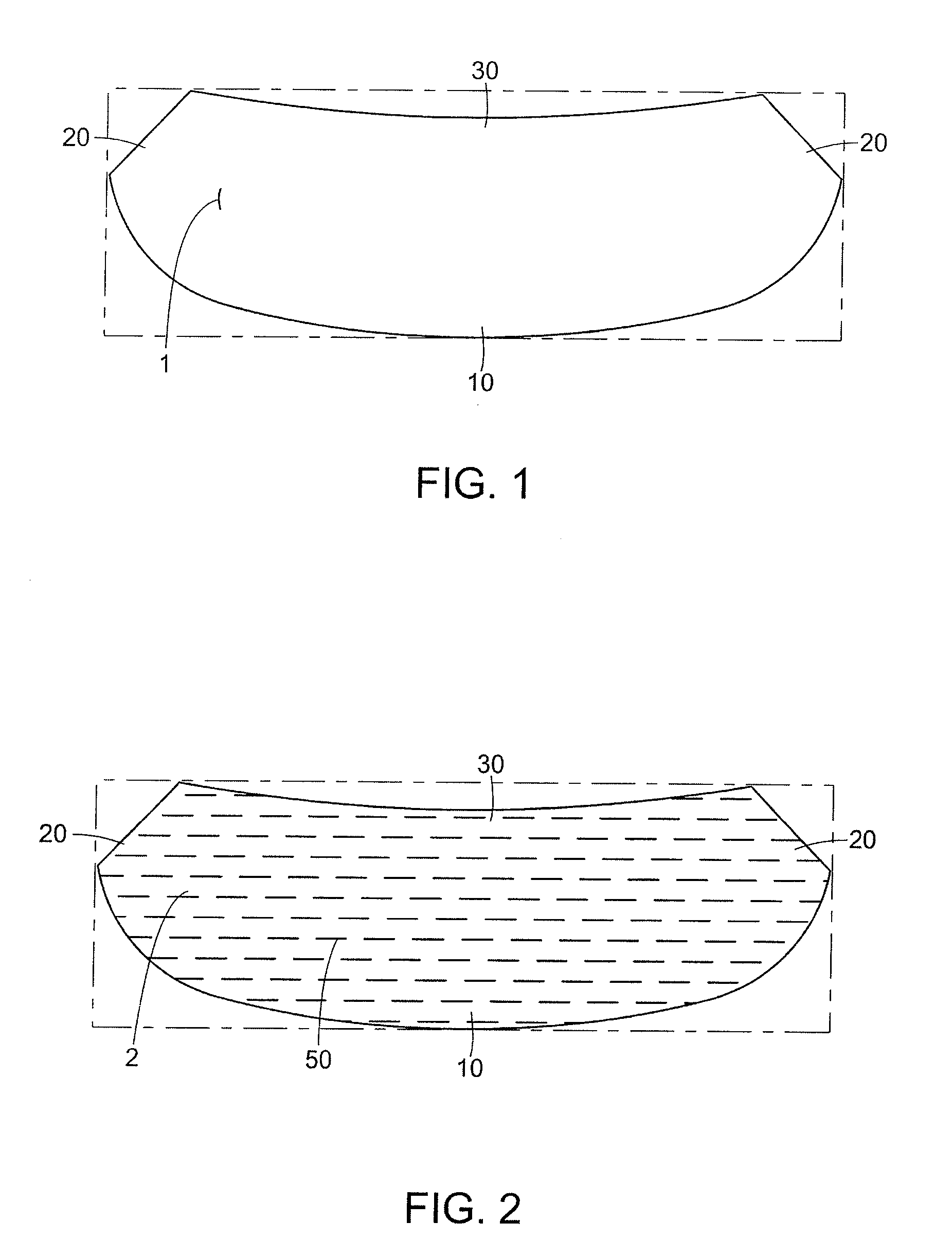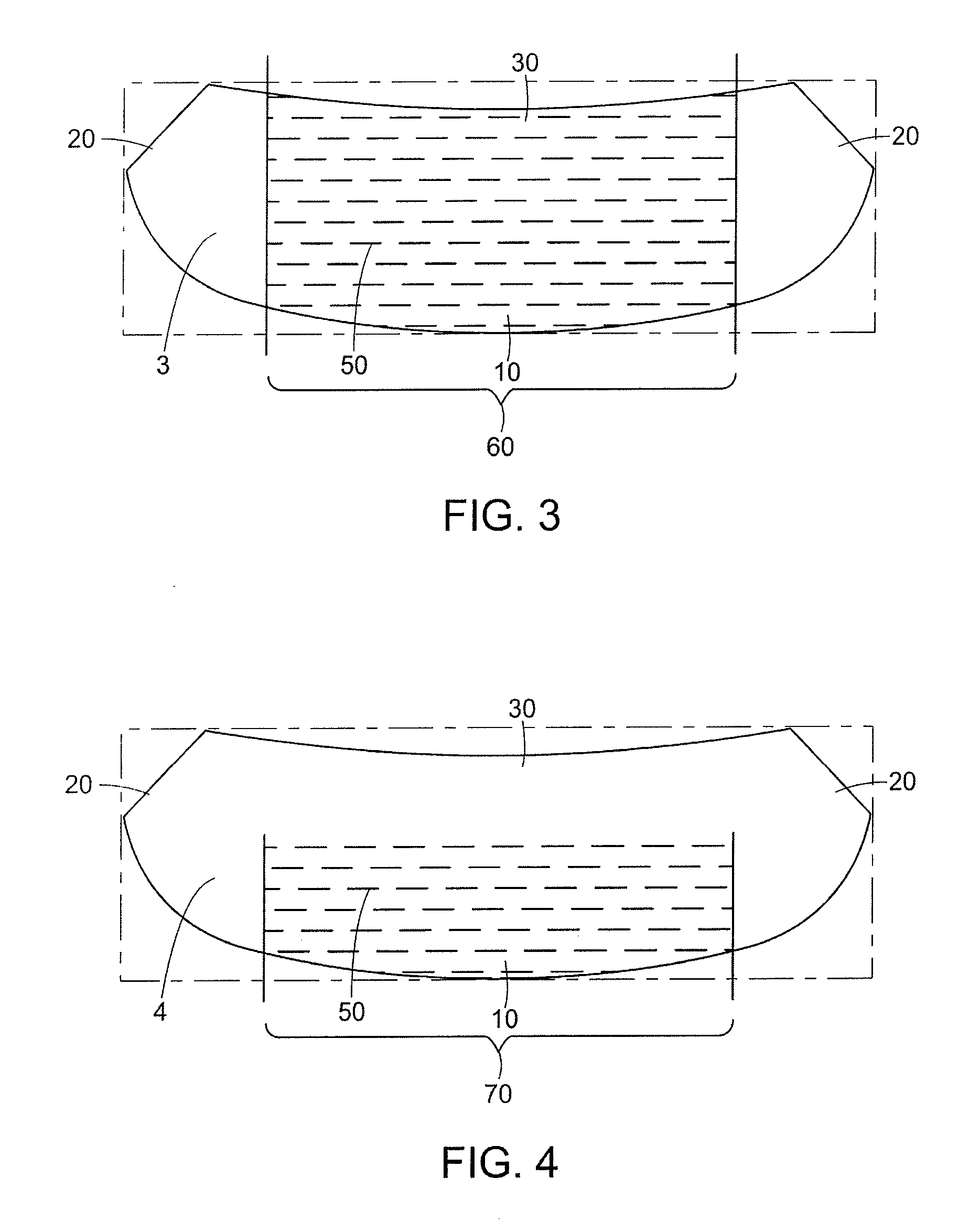Mastopexy and Breast Reconstruction Prostheses and Method
a breast reconstruction and breast technology, applied in the field of tissue engineering, can solve the problems of cosmetic improvement at the cost of scars, present specific risks and complications, and drawbacks of techniques, and achieve the effects of improving the performance of mastopexy and breast reconstruction devices, preserving strength, and being convenient to handl
- Summary
- Abstract
- Description
- Claims
- Application Information
AI Technical Summary
Benefits of technology
Problems solved by technology
Method used
Image
Examples
example 1
Chemical Cleaning of Mechanically Cleaned Porcine Small Intestine
[0140] The small intestine of a pig was harvested and mechanically stripped, using a Bitterling gut cleaning machine (Nottingham, UK) which forcibly removes the fat, muscle and mucosal layers from the tunica submucosa using a combination of mechanical action and washing using water. The mechanical action can be described as a series of rollers that compress and strip away the successive layers from the tunica submucosa when the intact intestine is run between them. The tunica submucosa of the small intestine is comparatively harder and stiffer than the surrounding tissue, and the rollers squeeze the softer components from the submucosa. The result of the machine cleaning was such that the submucosal layer of the intestine solely remained.
[0141] The remainder of the procedure, chemical cleaning according to International PCT Application No. WO 98 / 49969 to Abraham, et al., was performed under aseptic conditions and at ...
example 2
Method for Fabricating a Multilayer ICL Construct
[0149] ICL processed according to the method of Example 1 was used to form a multilayer construct having 2 layers of ICL. A sterile sheet of porous polycarbonate (pore size, manufacturer) was laid down in the sterile field of a laminar flow cabinet. ICL was blotted with sterile TEXWIPES (LYM-TECH Scientific, Chicopee, Mass.) to absorb excess water from the material. ICL material was trimmed of its lymphatic tags from the abluminal side and then into pieces about 6 inches in length (approx. 15.2 cm). A first sheet of trimmed ICL was laid on the polycarbonate sheet, mucosal side down, manually removing any air bubbles, folds, and creases. A second sheet of trimmed ICL was laid on the top facing, or abluminal side, of the first sheet with the abluminal side of the second sheet contacting the abluminal side of the first sheet, again manually removing any air bubbles, folds, and creases. The polycarbonate sheet with the ICL layers was ang...
example 3
Implant Studies Using Multilayer ICL Constructs
[0153] New Zealand white rabbits were used for in vivo analysis and all procedures were performed in compliance with Animal Care and Use Committee (ACUC) guidelines. A full thickness defect of approximately two inches was created through the rectus abdominis muscle in each animal and then was repaired with a 6 layer patch prosthesis. Patches were removed at 30, 66, 99 and 180 days post-implant. Three rabbits were sacrificed at each time point and examined for any evidence of herniation, swelling, infection or adhesions. Explanted patches were fixed in formalin and stained with hematoxylin and eosin or alizarin red for histologic evaluation of cell infiltration, inflammatory response and calcification. In some cases, unfixed patches were evaluated to determine the effect of implantation on the mechanical characteristics using uniaxial MTS analysis.
[0154] All animals underwent an uneventful post-operative course with no swelling, hernia...
PUM
| Property | Measurement | Unit |
|---|---|---|
| pore size | aaaaa | aaaaa |
| pore size | aaaaa | aaaaa |
| pore size | aaaaa | aaaaa |
Abstract
Description
Claims
Application Information
 Login to View More
Login to View More - R&D
- Intellectual Property
- Life Sciences
- Materials
- Tech Scout
- Unparalleled Data Quality
- Higher Quality Content
- 60% Fewer Hallucinations
Browse by: Latest US Patents, China's latest patents, Technical Efficacy Thesaurus, Application Domain, Technology Topic, Popular Technical Reports.
© 2025 PatSnap. All rights reserved.Legal|Privacy policy|Modern Slavery Act Transparency Statement|Sitemap|About US| Contact US: help@patsnap.com



